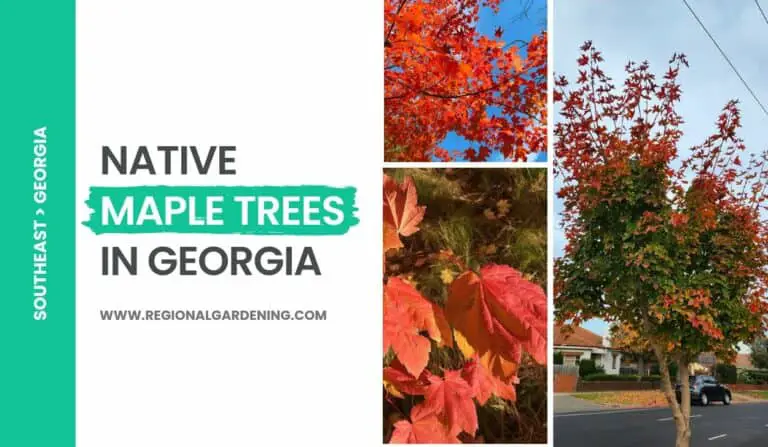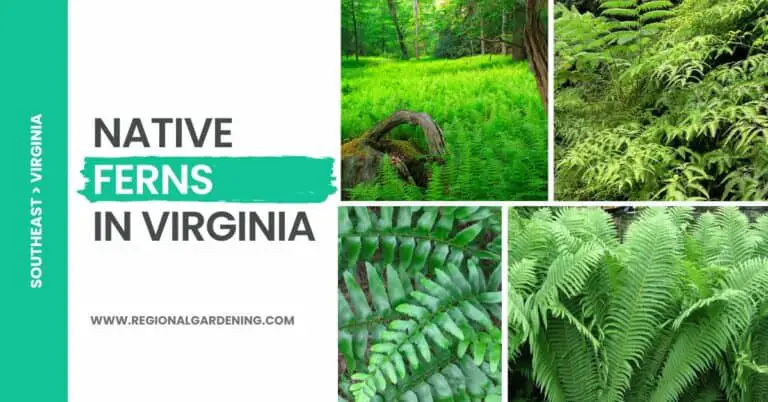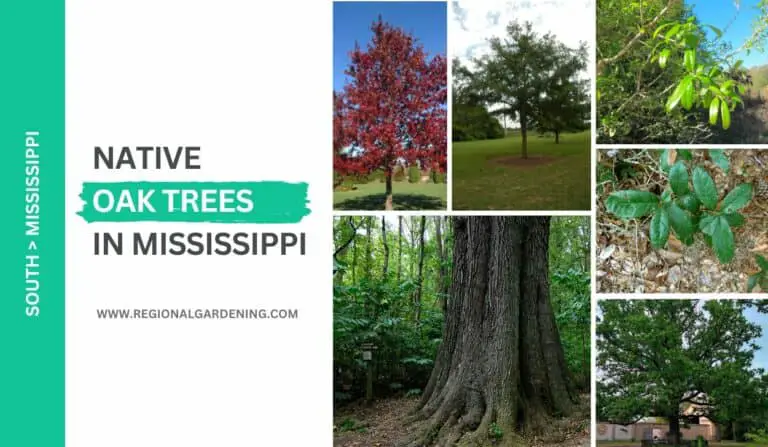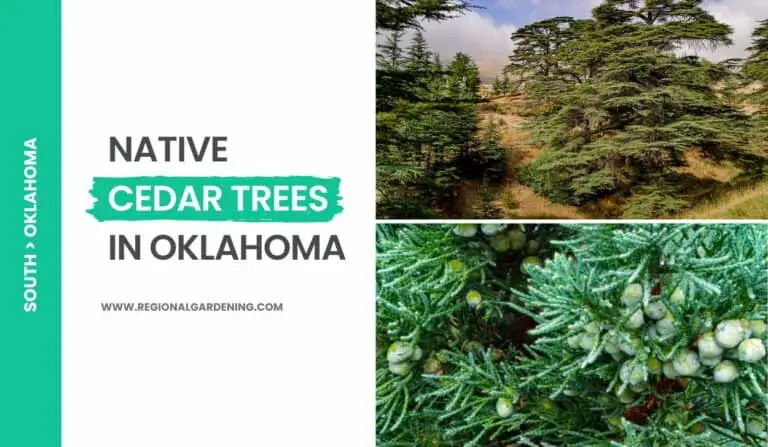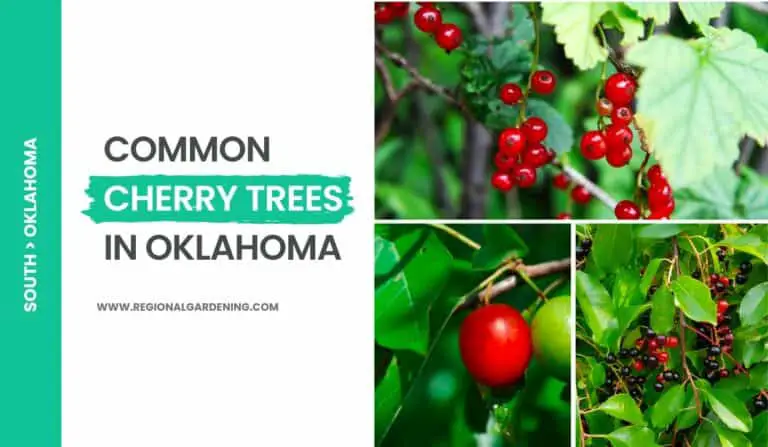2 Native Locust Trees In Kentucky (Photos & Details)
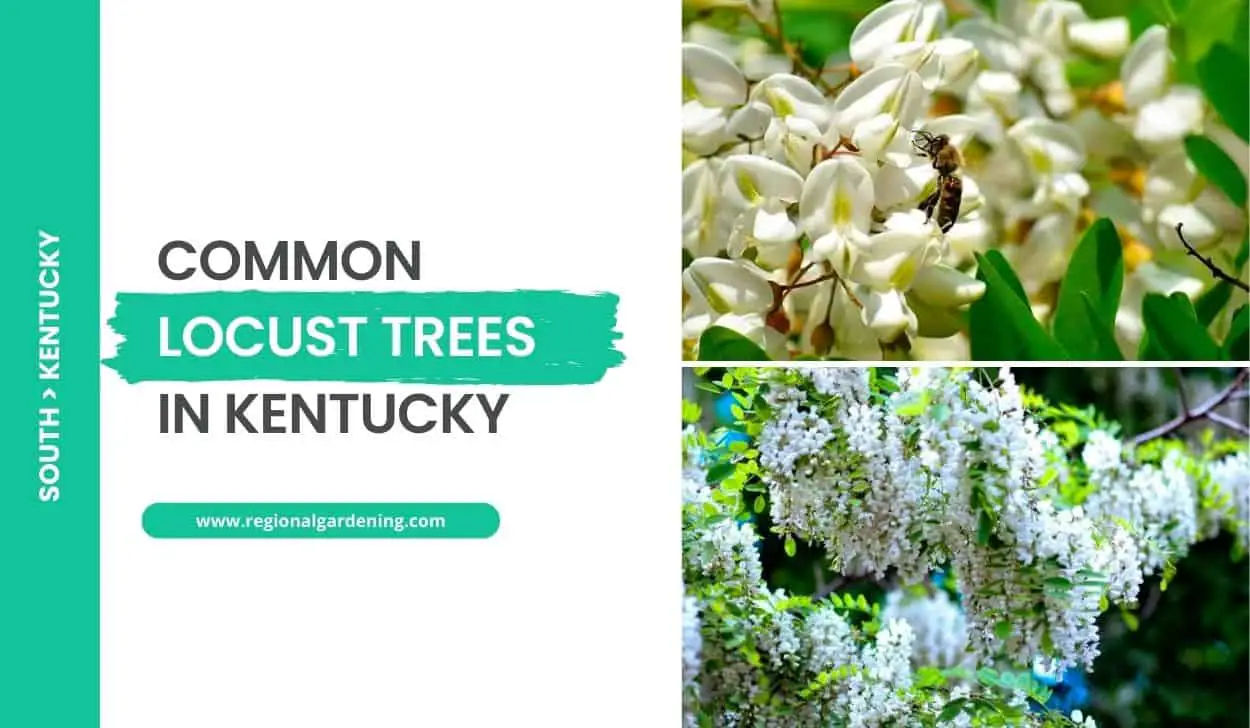
Learning about the world of trees broadens our understanding of nature and gives us insight into the variety of species that inhabit it. The locust tree is one of these that is frequently ignored. However, this tree can make a fantastic addition to your assortment of ornamental trees.
If you live in Kentucky, you have undoubtedly seen these trees quite a bit. In this article, we will concentrate on the two most common locust trees in Kentucky: the black locust and the honey locust.
Let’s begin with honey locust, the most common among native locust trees in Kentucky.
1. Honey Locust
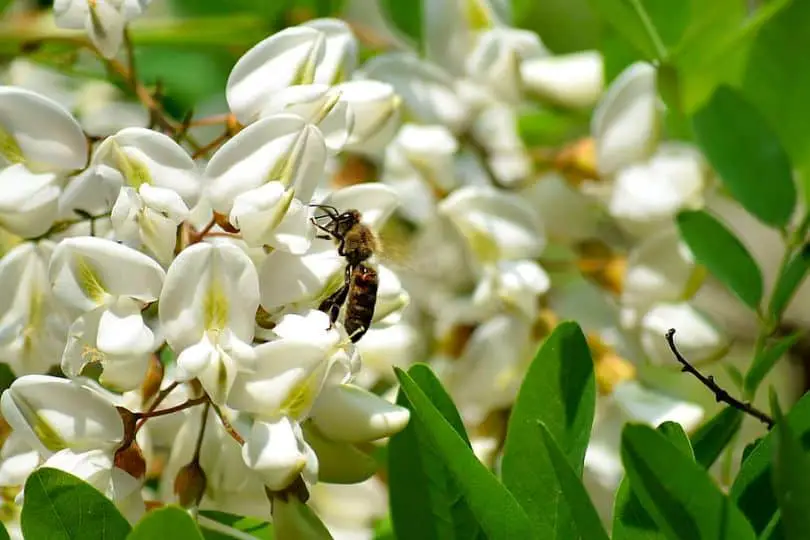
- Scientific Name: Gleditsia triacanthos
- Common Name(s): Honeylocust
- Mature Height: Varies from 30 to 70 feet tall with a similar spread, can reach a height of 100 feet or more in the wild.
- Native Region: Pennsylvania to Nebraska, south to Texas and Mississippi.
- Flowers: Greenish-yellow, perfect and imperfect flowers borne on the same tree from May to June. Flowers are fragrant but not showy.
- Fruit: Reddish-brown to brown pod from 7 to 18 inches long and about an inch wide, containing hard, oval seeds. There are cultivars that are fruitless.
- Uses: Used as a street and shade tree.
Honeylocust (Gleditsia triacanthos) is a natural tree found in central and western Kentucky with many thorns along the main stem and branches. Landscape trees, on the other hand, are thornless and frequently lack the typical long pods. The Kentucky champion tree can reach a height of 80 feet in Lewis County and is common in ancient farms and meadows.
Honeylocust, once thought to be a great lawn tree, has become overused, resulting in disease and insect problems that decrease its lifespan in many locations. The tree provides modest shade and allows grass to grow up to its trunk, as well as brilliant green leaves that turn yellow in the fall. The thornless variant (var. inermis) lacks the species’ long thorns.
Honeylocust grows in a variety of environments, preferring full sun on limestone soils or rich, moist bottom lands. It can withstand high pH, drought, and salt, but it is vulnerable to a variety of pests and diseases, including leafhoppers, cankers, borers, webworms, spider mites, powdery mildew, rust, and leaf spots.
Pruning in the fall is advised, and the tree is simple to transplant, despite the fact that its coarse root structure necessitates a larger-than-average root ball.
The botanical information for the tree shows that it is native to Pennsylvania, Nebraska, and Texas and Mississippi. It grows from 30 to 70 feet tall and has a short trunk, an open, spreading crown, and an uneven shape. Flowers are greenish-yellow in color, not showy yet fragrant, and bloom from May to June. The fruit is a 7 to 18-inch-long reddish-brown to brown pod with firm, round seeds.
Honeylocust cultivars include ‘Christie,’ ‘Emerald Kascade,’ ‘Impcole’ or Imperial®, ‘Moraine,’ ‘Shademaster,’ ‘Skyline,’ and ‘Sunburst.’ These varieties have different growth patterns, shapes, and foliage colors. Honeylocust has been used in Kentucky settings for its aesthetic appeal and ability to complement various architectural characteristics. However, its widespread planting has made it more vulnerable to insect and disease pests, potentially limiting its longevity in the region.
2. Black Locust
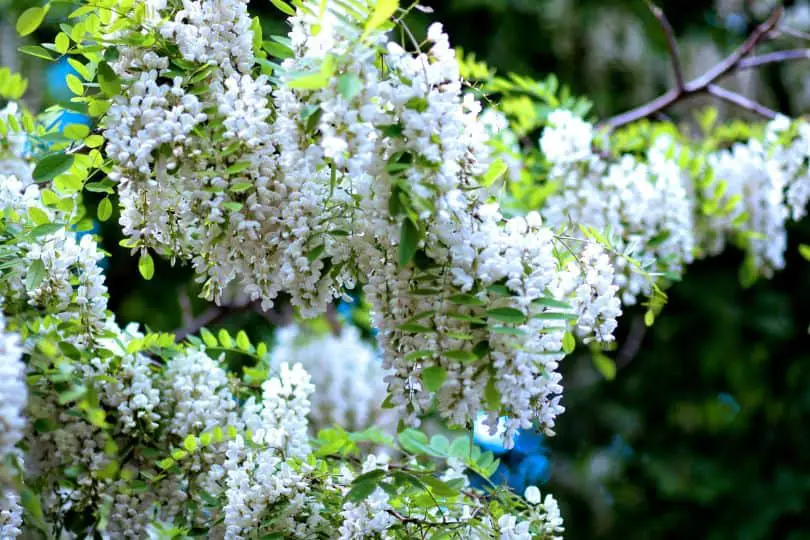
- Scientific Name: Robinia pseudoacacia
- Common Name(s): Black Locust
- Mature Height: 20-40 feet
- Native Region: Pennsylvania to Georgia, west to Iowa, Missouri, and Oklahoma
- Flowers: White or rose-pink, 1 inch across, borne in May in 4- to 8-inch-long racemes
- Fruit: Flat, brown-black pods, 2-4 inches long, dry and paper-like
- Uses: Drought-tolerant, can be used for shade, erosion control, and as an ornamental tree
Black Locust, also known scientifically as Robinia pseudoacacia, is a frequent tree in Kentucky gardens. It grows to a mature height of 20-40 feet. It is native from Pennsylvania to Georgia, and west to Iowa, Missouri, and Oklahoma. It thrives in the region’s climate and soil conditions.
This tree is well-known for its fragrant and gorgeous white or rose-pink blossoms. These flowers bloom in racemes 4 to 8 inches long during the month of May. The tree also produces flat, brown-black pods with a dry, paper-like texture that are 2-4 inches long.
Black Locust is a multipurpose plant with numerous applications. It is drought-resistant and can be planted for shade or erosion control. The tree can also be used as a decorative addition to landscapes, bringing beauty and interest.
In terms of Kentucky landscape maintenance, Black Locust adapts well to a variety of soil types, with the exception of chronically moist soils. It flourishes best in damp, loamy limestone soils. Transplanting Black Locust is simple, and it grows in zones 3 to 8 (maybe 9).
However, Black Locust has several common insect issues, such as internal deterioration, borers, and the black locust leaf miner. While these issues seldom kill the tree, it is suggested that trees with internal decay be removed to avoid potential property damage or harm to people in urban areas.
Native Locust Trees In Kentucky – Frequently Asked Questions (FAQs)
Let’s take a look at some of the most commonly asked questions on the internet about common and native locust trees in Kentucky.
Are locust trees native to Kentucky?
Yes, locust trees are native to Kentucky. The Black Locust and the Honey Locust are the two most common types of locust trees in the state. They are commonly found in a variety of locations throughout Kentucky. Both species of this tree are well known for their hardiness and adaptability to a variety of environments.
For centuries, the black locust tree, in particular, has been used for its hardwood properties in fence and furniture construction. Meanwhile, because of its resilience and adaptability to different soil and climate conditions, the honey locust, distinguished by its large thorns and sweet-tasting pods, is frequently used in landscaping.
Are locust trees a good option for a Kentucky backyard?
Because of their adaptability to a variety of soil and climatic conditions, locust trees can be an excellent choice for a Kentucky backyard. They are hardy trees that can withstand Kentucky’s changing climate. They grow quickly, provide plenty of shade, and their blooming flowers add beauty to the landscape. Because of their nitrogen-fixing ability, black locusts in particular can benefit the soil.
However, some species, such as the Black Locust, are susceptible to wood borers and can be invasive, spreading seedlings throughout the yard. While less invasive, honey locusts have thorny pods that can be a nuisance. As with any tree selection, consider the tree’s size, maintenance, pest susceptibility, and impact on local ecosystems.
What are the common uses of locust trees in Kentucky?
Locust trees in Kentucky have several common uses in both landscaping and commercial applications. Because of their rapid growth and tolerance, they are ideal for use as shade or street trees in urban landscaping. Their dense, decay-resistant wood is used in the production of fence posts because it requires little treatment and lasts a long time. Locust trees are also important for soil stabilization and reforestation efforts, particularly in areas devastated by mining.
Because of their fragrant white blossoms that are highly appealing to bees, some species, such as the black locust, are used in the production of honey. The edible flowers are also used in beverages and foods, and their sweet-pea-like flavor is added to salads.
Similar Articles
- Maple Trees In Kentucky
- Dogwood Trees In Kentucky
- Berry Trees In Kentucky
- Oak Trees In Kentucky
- Hickory Trees In Kentucky
- Cypress Trees In Kentucky
- Ash Trees In Kentucky
- Elm Trees In Kentucky
- Pine Trees In Kentucky
- Magnolia Trees In Kentucky
- Birch Trees In Kentucky
- Cedar Trees In Kentucky
Sources
The Regional Gardening team makes sure that the information in our articles is accurate by only using sources that are known to be trustworthy. Some of these sources are peer-reviewed journals from government agencies, well-known universities, and scientific research organizations.
- Common Kentucky Trees, Department of Forestry & Natural Sources, University of Kentucky
- Native Trees Of Kentucky, Department of Horticulture, University of Kentucky.
- Trees & Shrubs of Kentucky, Book By Mary E. Wharton and Roger W. Barbour, University Press Of Kentucky


